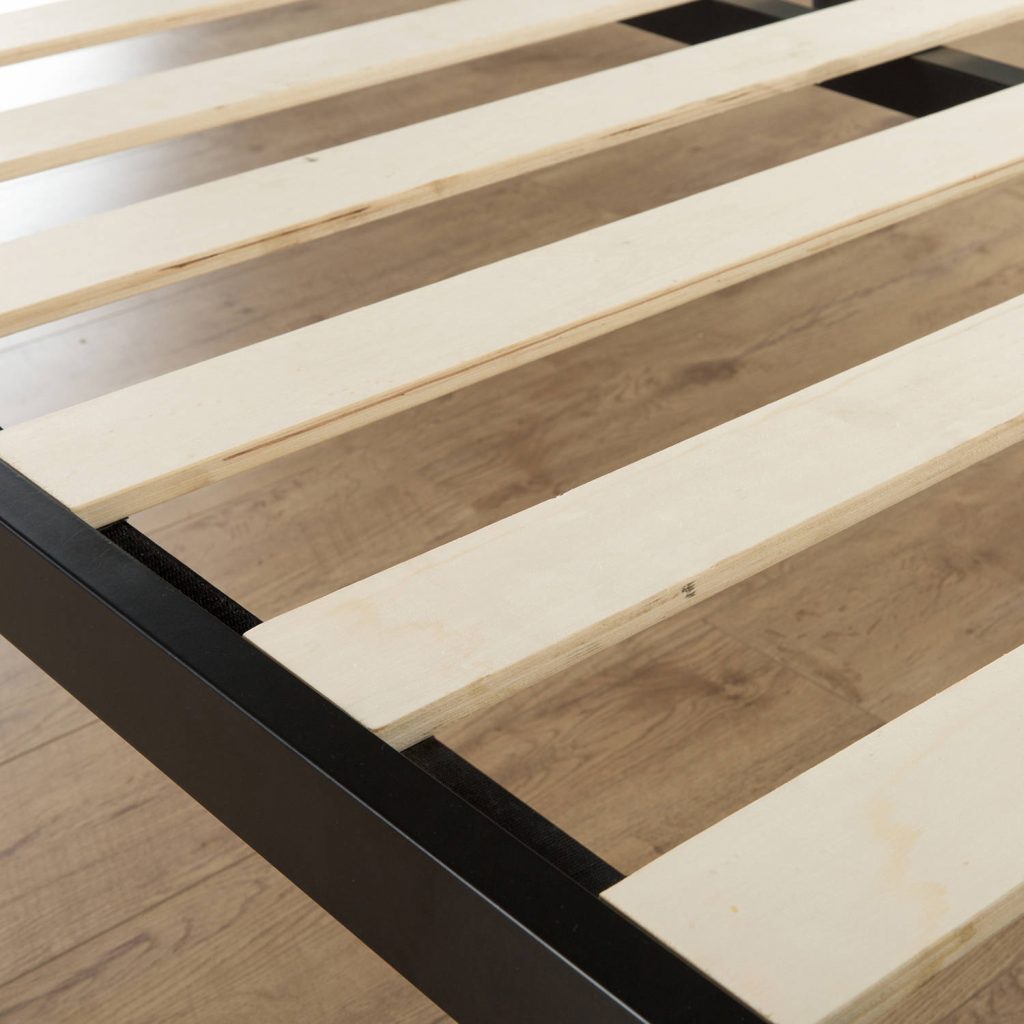Mattresses aren’t cheap.
So when they start to sag or show signs of indentation – we all start to worry.
While most mattress companies offer long warranties, they don’t last forever. Or worse yet, the original company may no longer exist!
Thankfully, there’s a few DIY tricks we can use to fix a mattress with indentation or sagging:
- Try rotating (not flipping the mattress)
- Ensure your bed frame isn’t causing the sagging
- Try using a mattress topper
- Experiment with pillows on/under your mattress
- Air out a memory foam mattress
- Check if your mattress indentation is covered under warranty.
But there’s much more to it than that.
Ready to solve this sagging mattress? Then read on.
What Causes Mattress Indentation
Now, some sagging or indentation is going to happen in all mattresses.
(Thanks to a thing called gravity.)
However – this shouldn’t be noticeable. It definitely shouldn’t affect how you sleep. This type of sagging depends on your mattress material. The springs in a spring mattress lose their coil tension over time, while the foam in a memory foam mattress gets compressed over time.
This all happens wherever you sleep – where weight is applied most. Especially true for heavier-set people, or couples who like to sleep close to each other.
Tips to Fix a Sagging or Indenting Mattress
Let’s get into the actual tips.
Below are different ways you can fix mattress indentation yourself. Try to bear in mind the size and fabric of your mattress, as these can impact which tips are most helpful for you.
Rotate Your Mattress
Note – this is NOT the same as flipping your mattress!
Not every mattress is made to be flipped, and doing so may damage it. Don’t try that unless the mattress is made to be flipped.
What I mean is simply rotating or ‘turning’ your mattress around. So your head is where your feet was, and vice versa.
This can help to offset the major sags and indents, since the majority of our weight is in our upper bodies.
However – it’s only a temporary fix. Eventually the same sagging will occur, but in combination with the previous indentation. So while this will help, it’s best to use it in combination with other measures.
Check Out Your Bed Frame
While or before you rotate your mattress, it’s worth taking a look at your actual bed frame.
A flimsy frame is one of the most major causes of mattress indentations.
Your mattress may be perfectly fine, but if it’s sitting on a sagging frame – it’s going to seem like the mattress is sagging!
For this reason, most companies require their mattresses to be used on sturdy frame with at least 6 legs of support. Using it otherwise can void your warranty.
The biggest frame culprit are those cheap frames with wooden slotted planks. These bend easily, and the poor quality ones have massive gaps between the wood. It’s no wonder a heavy mattress plus the weight of two adults is going to cause a bit of deflection.
Block Those Slots

Aside from getting a new bed frame, there’s some quick DIY fixes you can do to help give it some more support.
The most common, and simplest, is to reinforce with a layer or two of plywood. Simply cut a plywood sheet 1-2” thick and lay it on top of the wooden planks.
Like a mattress topper, this will help redistribute the load – especially away from areas sagging the most.
Use A Mattress Topper
Mattress toppers are 1-4” thick ‘mini mattress’ layers.

And take my word for it – they can absolutely transform a bed. We once went from a firm-as-a-board mattress to amazing sleep thanks to a 2.5” memory foam topper. I can’t recommend them enough.
Even the most thing topper will help by redistributing your weight over a larger area on the mattress itself. You’ll not only feel the indentations less, but cause less of them in the future, too.
Memory foam toppers are my hands-down favorite, but you can get greater toppers of all types.
Try Using Pillows
Ahh, pillows. There’s got to be no other piece of furniture as beloved as a good pillow.

In this case, they can help is one of two ways:
First – use them to support you while sleeping. Place a flat or body pillow over the sagging area can allow you to basically ignore the indentation.
Second – actually place them below the mattress! This takes a bit of trial and error, but placing old pillows underneath the sagging areas can counteract the indentations that appear on the surface.
Obviously, neither of these are permanent solutions. But they’re quick, cheap, and worth a shot if you’ve no other options.
In the market for pillows? Please consider getting yourself a high quality one to sleep on. These can make a ton of difference.
Check Out The Mattress Helper
Mattress sagging has been a problem for decades – so it’s about time there was a tool to solve it.
A patented design, the mattress helper is simply a block pad which is placed between your mattress and the bed frame.
It acts to ‘lift’ the mattress up, giving it a more stable base and reduce sagging / indentation.
It’s fairly inexpensive and is available on Amazon Prime – so worth a shot!
Is Your Memory Foam Mattress Depressed?
Maybe you could try talking to it, and offering it a cup of tea?
I’m just kidding – but not really.
Memory foam mattresses used on a blocky frame can sag over time. This is because they need air to ‘bounce back’ after your weight isn’t on them.
A blocky frame stops the air getting back in on the bottom – leading to sagging and indentation on the top.
Simply by stripping down the mattress, standing it up, and letting it breathe, you may be able to watch it take a full recovery.
If you’ve got a memory foam mattress that you’ve been trying to solve, I hope your eyes are lighting up right now. This is the simplest and easiest fix. It’s also massively effective and totally free. Jackpot!
Can Mattress Indentation Be Good For You?
Interestingly – the answer here is partly yes!
A little indentation or sagging can be beneficial.
Key word there being little.
A small amount of sagging can help side sleepers by providing cushioning on your hips and shoulders. It can also be warmer on a memory foam mattress with a bit of an indent – as the warm mattress ‘wraps’ around you a little bit.
However, in general, indentation or sagging is bad, bad, bad.
It’s often uncomfortable. It can put pressure on certain areas of your back – a pressure which lasts for 8 hours and is repeated every night. (This is how lifelong back issues can develop!)
Not to mention that sagging coils are squeakier – and that’s never good.
An indented can also be hotter. Compressed coils don’t have much airflow to let warm air out of the mattress. Same goes for memory foam – compressed foam will trap heat, making things get hotter and hotter throughout the night.
Is Mattress Sagging Covered Under Warranty?
The resounding answer here is YES.
By law, mattress companies are required to cover sagging and indentation to some extent.
This is because it’s guaranteed to happen – there’s no anti-gravity solution that we’ve found (yet).
The issue is that the sagging is covered to a limited amount.
This is usually between ½ to 2 inches, with 1 inch of sagging being the standard indentation.
As you can imagine – especially on larger mattresses – this isn’t the most lenient level of support!
Conclusion
Mattress sagging can cause a lot of discomfort. Not only in uncomfortable aches and pains, but also in levels of worry about how much a new mattress will cost.
I hope this quick guide has given you a few solutions to help solve your problem.
A little hard work and ingenuity can breathe years more life back into almost any old mattress.
If this content’s helped you, please consider supporting the blog by checking out some of our related articles below.
Thanks for reading, and I hope you rest well.
